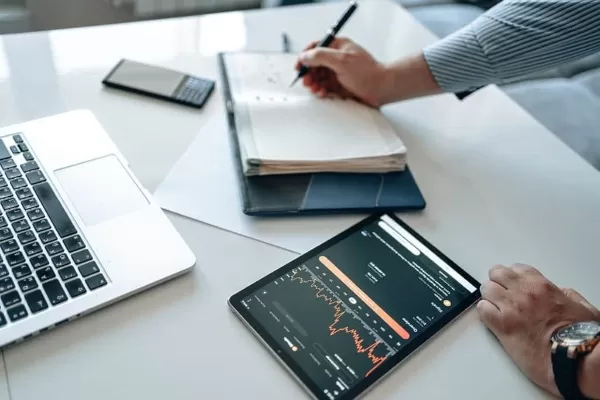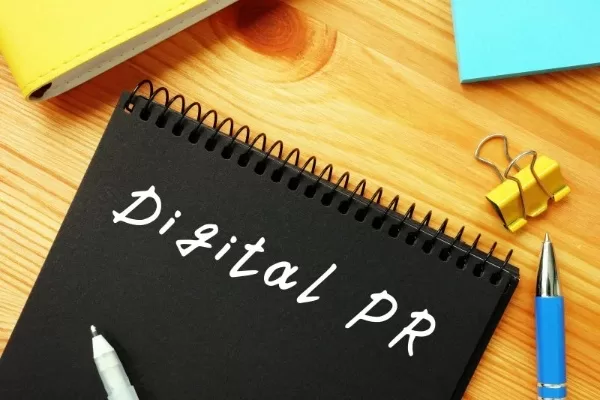Insights
Digital PR for SEO: A Detailed Guide For Link Building
On Digitals
14/08/2025
33
Digital PR for SEO helps your brand get noticed by the right people and search engines. It starts by crafting a story or data that journalists or bloggers want to cover and that naturally attracts high quality links back to your site. When digital PR for SEO works it boosts your visibility in Google results and drives referral traffic. In this guide we break down how digital PR for SEO delivers measurable impact with practical examples and simple steps included.
What Is Digital PR for SEO?
Ever wonder how to turn a good story into Google trust and traffic? That’s exactly where digital PR for SEO comes in. Instead of rolling out the same old press release and hoping for coverage, you focus on crafting narratives or data-backed content so compelling that journalists, bloggers, or niche influencers want to link to your site.
When that happens, you’ll earn editorial backlinks that Google sees as strong votes for authority and relevance. That, in turn, boosts rankings and referral traffic, all while building brand visibility online.
How It Differs from Traditional PR and Link Building
Traditional PR is about managing perception through outlets like newspapers or TV. Digital PR is built for the internet, targeted at blogs, online news platforms, and podcasts, and designed to earn links Google values. Unlike standard link building, digital PR for SEO is about reaching out with your own content, so you gather fewer shallow links and more mentions from credible voices that matter.

What is digital PR for SEO?
Aligning Digital PR for SEO with Your SEO Goals
If your SEO plan targets improved domain authority, better branded search presence, and long-term SERP visibility, this is your strategy. High-quality backlinks from trusted sites directly signal expertise and trust to Google.
Combined with consistent media mentions and data-led narratives, they help build standing in both search rankings and brand awareness. When you plan your creative assets, outreach, and metrics together, digital PR for SEO ties your stories to SEO goals in one smooth campaign.
Why Digital PR for SEO Matters?
Builds Real SEO Value
When it comes to building real SEO power, digital PR for SEO delivers by securing high‑authority backlinks from industry‑trusted publications, something that generic exchanges just can’t match.
Plus, these earned links also send actual referral traffic, meaning people click over because they trust the source, so you’re not just boosting rankings, you’re drawing in engaged readers who want to learn more organically.
Reinforces Brand & SEO Credibility
A mention on a high-authority website doesn’t just help rankings, it boosts your domain authority, giving future content a stronger chance to rank. Over time, Google values those signals like editorial backlinks more than keyword stuffing.
Even better, each time your brand is cited, you gain a trust node in the eyes of generative search engines. AI‑powered search increasingly weighs brand authority and reputation, not just keywords or meta tags.
Adapts to Evolving Search Behaviors
The digital PR model is built for modern search engines. As queries shift from typed keywords to AI-powered answers, via Google’s AI Overviews, chat assistants, and tools like Perplexity, visibility depends more on how often your brand is mentioned across authoritative sources. Building consistent exposure through digital PR ensures your brand is recognized across panels and generative snippets.

Why do you need digital PR for SEO?
How to Execute a Digital PR for SEO Campaign
Define Clear Objectives
Start by tying your digital PR for SEO campaign to measurable SEO outcomes. What numbers will you watch? Maybe earn X backlinks from domains with 50+ domain authority or record Y percent lift in branded organic search visits. This method mirrors the SMART framework used in SEO goal-setting to keep things specific, measurable and anchored in data.
Based on that, sketch your timeline honestly. Most brands begin seeing SEO traction around four to six months, with more significant results by six months. Finally, decide your tracking tools up front to measure the success of the campaign.
Understand Your Audience & Media Landscape
Before anything else, zoom in on the people you need to reach. Start by using tools and conduct market research to study online behaviors, pick preferred platforms and publishers your audience already follows. Next, run a backlink gap analysis to spot high-authority domains linking to competitors, but not you. That identifies precise targets ripe for outreach.
Devise Newsworthy, SEO‑Friendly Campaigns
Journalists and high-authority websites love stories backed by unique data. A survey with multiple visuals can capture attention more than a generic write-up. Jump on breaking related news angles to insert your brand into the conversation.
This approach is colloquially known as newsjacking, which means you react to trending stories with timely commentary. And yes, fun creative assets, including infographics, photo drops, interactive charts, turn a data point into a shareable asset that can drive robust outreach.

How to put together a strategy for digital PR
Create High‑Value Content Assets
Every pitch should center around a clear narrative hook like a trend you expose, a gap you fill, or an insight that counters conventional wisdom. Clarity, credibility, and visual polish as keys to content assets that earn links. Always bundle shareable assets like charts, downloadable data tables, infographic previews into your pitch. Reporters appreciate having the tools they need to write fast and well.
Outreach, Pitch & Follow‑up Smartly
Build your media list by beats and past editorial behavior. This means building on-target media lists, rooted in what reporters cover and prefer. Tailor each email opening with a nod to the journalist’s beat or previous story and keep these emails short. Sharp subject line, a strong hook, quick value explanation, and a one-sentence ask are what usually work. Provide links to assets, image options, or quote suggestions right from the start. And always close with a clear call-to-action—for example, “Would you like a quote or slide deck?”
Distribute & Amplify
Once coverage is out there, don’t wait for shares to happen on their own. Publish the asset on your own channels (blog, LinkedIn, Twitter, email) to initiate engagement around the link, even a small paid boost (say, social ads or influencer micro-partnerships) can ignite conversations and earn additional links.
Measure, Learn & Iterate
Set automated Google Alerts or use media monitoring tools to track mentions, tone, and share of voice across platforms. Then use your preferred SEO tool (Semrush, Ahrefs, Moz, etc.) to watch link velocity, referring domain authority, organic traffic shifts, and SERP visibility. Over time, analyze which story types actually earned links or media reach, and use that insight to refine future campaigns.
Best Practices for Digital PR for SEO
Prioritize Story and Data Relevance
Journalists are swarmed by recycled visuals and generic pitches that fail to capture attention, so for digital PR for SEO, even a single original data insight can transform your outreach by giving editors a fresh angle they cannot ignore. Tailoring your narrative and visuals to match a publication’s style shows respect for a journalist’s expertise and greatly increases the odds of placement.
Focus on High-Quality, Not Quantity
When it comes to digital PR for SEO, a link from a highly authoritative site delivers far more long-term value than dozens of low-tier backlinks. Such contextual editorial links send Google strong trust signals, whereas volume-driven tactics can raise red flags during algorithm updates. Top practitioners advise aiming for placements that seamlessly integrate your brand into compelling stories rather than forcing links into sidebars or directories.
Build Ongoing Media Relationships
Sustained digital PR success depends on cultivating genuine relationships with journalists, influencers, and media outlets over time. Sharing thought-provoking insights, articles, or data updates will keep your brand top of mind long after a campaign concludes. Embracing social engagement and occasional check-ins instead of one-off cold emails turns casual contacts into repeat supporters.
Avoid Link-Bait and Prioritize Authority
True digital PR for SEO thrives on earned links, not on gimmicky tactics like automated exchanges or incentivized sharing. Aggressive or overly promotional approaches often backfire, causing media contacts to tune out future communications.
Prioritizing editorial-quality content over shortcuts ensures sustained credibility and visibility in search results. Also, Google will evaluate the quality of your links, so quantity is not the end-all-be-all of things.

What to do for better results in digital PR
FAQs About Digital PR For SEO
What is digital PR for SEO?
Digital PR for SEO is more than just link building—it’s a strategy that builds your online reputation by combining storytelling, original data, and targeted outreach to earn editorial backlinks. These links bolster your credibility, improve search visibility, and create pathways for users to discover your brand—all while aligning with what search engines prioritize.(turn0search0)
How is digital PR different from traditional PR and link building?
Traditional PR often focuses on brand perception through media placement, while pure link building emphasizes quantity—sometimes at the expense of quality. Digital PR blends the two, creating story-rich campaigns designed to earn authoritative links that are both relevant and valued by SEO. This approach aligns media outreach with long-term search visibility goals.
How long before digital PR impacts my SEO?
SEO awareness grows over months, not overnight. Optimistically, you might notice early signals in 4 to 6 weeks, but it generally takes 3 to 6 months or longer to see real gains in domain authority, referral traffic, and branded search visibility. Newer or highly competitive sites should budget up to 12 months for significant results.
Can small businesses benefit from digital PR?
Definitely. Small businesses often have unique insights, local stories, or niche expertise that larger brands overlook. When you pitch original data or localized narrative thoughtfully, you can attract strong links and meaningful coverage, even on a modest budget.
How do you measure effectiveness effectively?
A balanced approach works best. Track the number and authority of backlinks earned, monitor referral traffic from published coverage, watch for increases in branded search volume, and assess share of voice across media. Tools for media monitoring and SEO analytics provide insight into both performance and attribution.
Bring Your SEO Efforts Public
Digital PR for SEO is your ticket to lasting online authority and real visibility. When you craft data-rich stories, build meaningful media relationships, and earn editorial backlinks, search engines take note and brands gain stature. Over time, these efforts reinforce trust, amplify referral traffic, and improve domain rankings in a sustainable, integrity-first way.
To turn insights about digital PR for SEO into real-world results, consider partnering with On Digitals, a trusted Vietnam-based agency delivering strategic SEO services that move the needle. Whether you’re dealing with lagging traffic or launching a new site, On Digitals focuses on the full spectrum of SEO: on-page, technical, off-page, local, and e-commerce optimization to elevate your brand’s visibility and performance.
NEWEST POSTS
Read more
